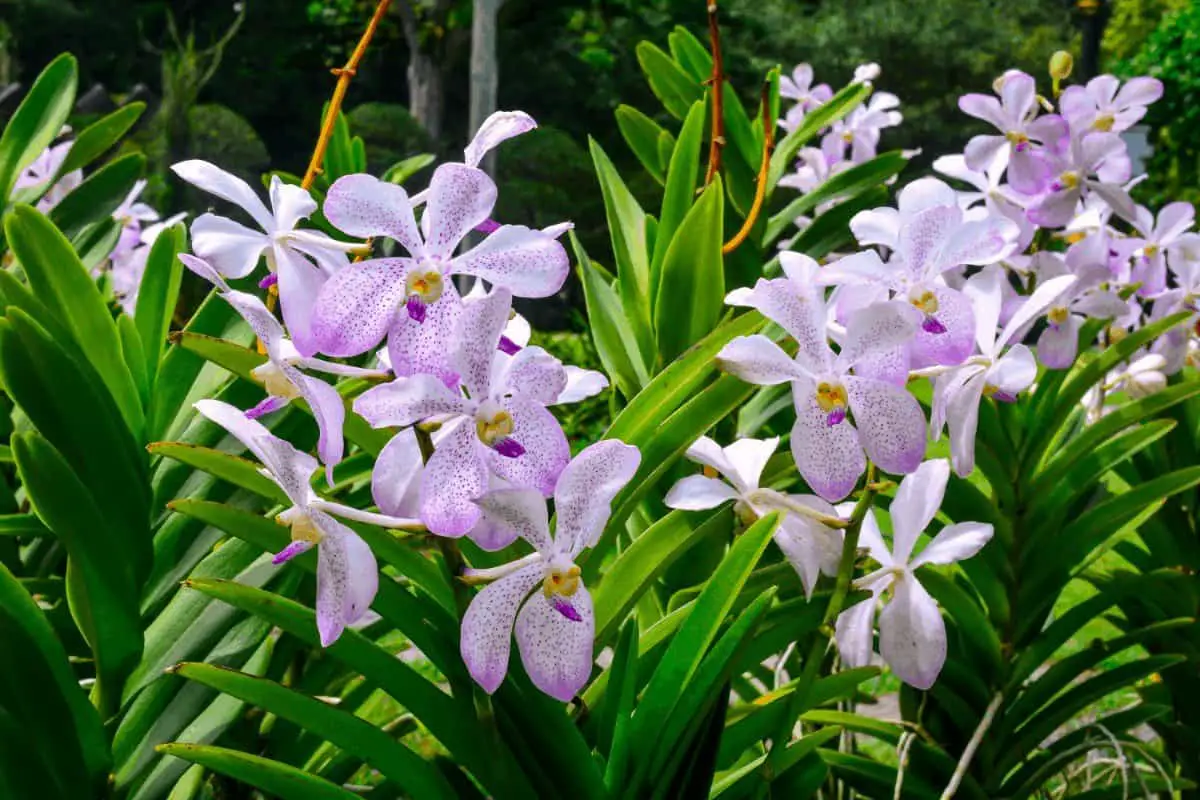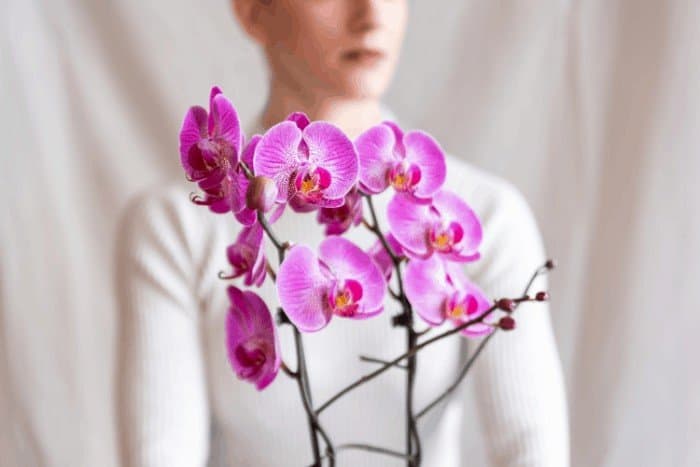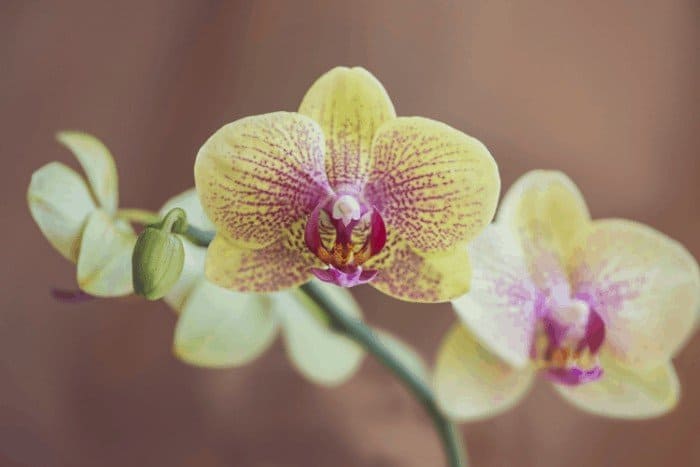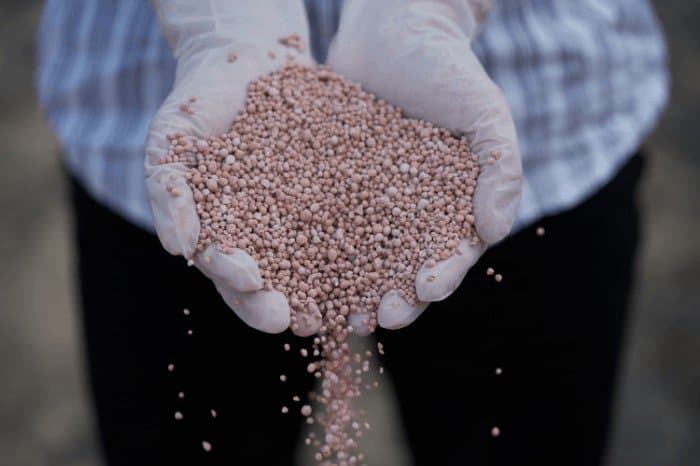Last Updated on March 25, 2022 by Griselda M.
In this article, I will be sharing with you some simple tips on how to care for orchids after blooming. It doesn’t matter if you are just starting out with a few pots or you are already an experienced gardener, you will certainly find some of the tips below to be helpful.
Orchids are some of the most beautiful flowers you can have in your garden. This is because they are delicate and are available in over 22,000 species. This means that it is possible for you to find the color, size, and shape that best appeal to you.
Flowers are a great way to beautify an indoor or outdoor space. They also have numerous benefits. But before you can harvest your flowers and use them to decorate your dining room table or send them to the market to sell, you will have to care for them. This is where most gardeners find it difficult.
As a responsible gardener, you need to devote time and a little bit of energy into caring for your plants daily (or regularly). Orchids need constant care and supervision for them to reach full bloom.
Orchid As a Medicinal Plant
Orchids are mostly indoor plants that are grown for beautification. But there are also species of orchids that are grown for their tubers for use as medicine. The Chinese were the first to discover the medicinal properties of orchids, and this dates as far back as the 28th century BC.
Parts of the orchid flower are used in making medicinal tea in China that has a lot of health benefits. There are claims that orchid tea may be of benefit in treating cancer, improving sight, and the immune system.
The species of orchid that are believed to have medicinal properties include vanda tessellate, eulophia campestris, vanda roxburghii, and orchis latifolia. These species of orchids possess phytochemicals which are used in making an antibacterial remedy to treat a certain ailment.
Know Your Orchid
Like we mentioned earlier, there are over 20,000 species of orchids out there, and there are equally a larger number of hybrids for you to choose from. Most of the orchid flowers available in the market are usually hybrids (this means that they are one of two varieties).
It is important that you know the name of the species of orchids you have planate din your garden. This will help you later on when you need to care for your orchid.
The common species of orchids that are commercially sold are the moth orchids and cane orchids.
-
Cane Orchids (Dendrobium)
The cane orchids can easily be identified as they grow in rows and have a thicker cane (stem) which is where it gets its name from. Their flowers are small and tend to form a cluster around the plant. The flowers may appear purple or white in color. You can also differentiate them by their leaves which are narrow and shoots out from the sides of the stem (cane).
-
Moth Orchids (Phalaenopsis)
Unlike the cane orchids, this species of orchid has flowers that grow directly from the stalk. The leaves are oval and denser than those of the dendrobium. They can appear white, pink, purple, or a combination of colors.
When shopping for orchids to plant in your pot, you should ask the florist for the name of the species. While all flowers tend to follow the same maintenance principle of watering and weeding regularly, there are some flowers that require extra care. So it is important you know the exact type of flowers you have in your garden so as you can be able to maintain it accordingly.
How To Care For Orchids After Blooming
You can find our step-by-step guide on how to care for orchids below. We have taken the liberty to include all the necessary information you will need from creating a healthy environment for your orchids to grow and taking care of pests and diseases.
-
Use pots with holes for drainage
Before you plant your orchids in the pot or even think or filling your orchid pots with potting soil, it is important that you drain some holes to make it possible for excess water to escape from the pot. It is true that your flowers need water to encourage growth, but too much water can be detrimental to your plant health.
Excess water in your orchid pot can lead to rotten plant roots, which will ultimately result in the death of the plant. You can shop for pots with drainage oils or drill tiny holes at a different section in your pot. Also, if you are using a pot without drainage holes for your orchids, it is best to re-pot them and do the needful.
If you are keeping your flower indoors, you will need to use a drip tray underneath the pot to collect excess water and save you the stress of having to mop up water from the ground.
-
Use a potting soil that allows for quick drainage
You can also care for your orchids by making use of a fast-draining medium like moss or bark-based potting medium. This is because they are designed to prevent overwatering which is one of the things that can cause your flowers to die. When using a moss-based medium for your orchids, you will need to water carefully since the medium retains more moisture. You will also need to re-pot regularly so your flowers can thrive.
-
Orchids need the right amount of indirect light
Orchids need the right amount of indirect sunlight for them to grow properly. Too much of direct sunlight can burn your delicate orchid flowers which is why you need to be cautious of where you place the pot. For your orchids to receive the right intensity and amount of sunlight, you will need to place them near east or south-facing windows. If you don’t have access to any windows facing these directions, you will have to cover the window with a sheer curtain to reduce the intensity of the sun.
-
How to Care for Orchids After Blooming: Keep the temperature in your home at 16 – 28 degrees Celsius
Orchids need a moderate temperature for them to thrive. Too much heat or cold can cause your flowers to die. Each species of the flower have their own temperature requirements and for orchids, you need a temperature of 28 degrees during the day and 16 degrees at night. During extremely hot weather conditions, you can get a standing fan close to the flower to gently ventilate the plant until the weather conditions are back to normal.
-
Water your orchids only when they need it
You don’t need to follow a watering schedule with orchards. You only need to water your orchids when they get dry and need water. This is because they do not thrive well in mediums with excess water. You will need to check the potting medium to see that it actually needs more moisture before adding more water.
The best way to test if your orchids need water is to dip your fingers into the grow bed. This is necessary to check that the soil is completely dry before adding more water into the medium. You will need to add water slowly and allow it to soak into the medium.
-
Apply fertilizers once a month to your orchids
You should apply fertilizers to your orchids once every month. This you will need to do as soon as the plant begins to flower. Use a balanced liquid fertilizer such as the 10-10-10 or 15-15-15. Ensure you mix the fertilizer properly (at half strength) and do not water the plant for a few days after applying fertilizer. This is so that the water does not strip the nutrients away from the fertilizer.
-
How to Care for Orchids After Blooming: Prune dead stems once the flower dies
Another important tip on how to care for orchids is to prune dead stems once the flower is no more. Apart from the moth orchid, other species of orchids do not flower again on the same stem after their death. So once you notice any dead flowers on your plant stem, cut the stem above the joints using sterilized scissors or knife. If you also have orchids with a thick stem (pseudobulbs), you will need to cut off the top of the stem that attaches to the flower.
-
Use insecticides occasionally and cut away diseased plants
You will need to use an insecticide on your orchid flowers once you begin to notice bugs swarming around the plant. Ensure that you use an insecticide that wouldn’t leave your plants with more infestation. Also, once you notice any spots or discolored leaves, you will need to cut it off by making use of a sterile cutting tool. You need to check properly that the disease hasn’t spread to the entire plant; else it will be best to cut out the entire plant.
You can grow your orchids to reach full bloom without much stress. All you need to do is to follow the best orchid’s maintenance procedures;
- Drill a drainage oil in the pot to allow the escape of excess water
- Use moss or bark-based potting medium
- Ensure they get enough indirect light
- Keep temperatures at 16 – 28 degrees
- Water orchids only when it is dry
- Apply fertilizer once a month
- Prune dead stems
- Cut off diseased plants and use insecticides regularly
Do you grow orchids indoors? How do you manage to care for them? We will like to hear from you in the comment section.
Read more about Why Are My Gladiolus Not Blooming?
FAQs
How do you get an orchid to bloom again?
The most basic way is to expose the plant to bright light for about 15-20 hours each day for about a month. You can also use a coffee filter as a misting device or submerge the orchid in water with some Epsom salts and slowly let it drip out without stopping. After this process, you should wait for about 8-10 days and then repot your orchid.
How far back should I cut my orchid after it blooms?
After an orchid blooms, it is best to cut the stem at 1 inch. If you wait too long, it could start decaying and the plant might not survive. While waiting for your orchid to bloom can be exciting, waiting too long can be dangerous for your plant.
Will my orchid grow a new stem?
As your orchid starts to grow, it might start to produce one or more new stems. If you have already been trimming the stem back, then that is a sign that your plant is about to produce a new stem.
Why does my orchid grow leaves but no flowers?
The most common reason for this is a lack of light. Orchids require a lot of light in order to grow and bloom. Without enough light, they will stop growing and turn their leaves into flower buds instead.
An easy way to combat this problem is by placing your orchid, indoors or outdoors, in an area with lots of natural sunlight.
Do you still water orchids after flowering?
Watering orchids is a very important process. After flowering, orchids need to be watered for a period of time before they go dormant again.
Some people think that after flowering, there is no need to water the orchid anymore. In fact, watering orchids after flowering is extremely important as it will help the plant prepare for its next blooming phase.
What is the lifespan of an orchid?
The lifespan of an orchid depends on the type of orchid
Different kinds of orchids can live for different lengths of time. Phalaenopsis, which is the most well-known variety, has a lifespan between five to ten years. Other orchids can live much longer. For example, Dendrobiums are known to live up to 25 years with some living up to 30 years!
What is best potting mix for orchids?
Orchids need a specific type of potting mix for them to thrive. Orchid potting mix is a mixture of ingredients that can include bark, peat moss, pine needles, perlite, and vermiculite. Orchids are sensitive to the composition of their potting mix so it is important to choose one that has been specifically designed for their needs.
Should an orchid be repotted?
The following will explain the importance of repotting an orchid and when a repot should be considered.
An orchid should be repotted when it is not getting enough air circulation, water, sunlight, or fertilizer. A plant may also need to be repotted if the roots are too crowded in the pot. In order to determine if a plant needs to be repotted, inspect it for signs of any of these four things:
- It's not getting enough light
- Needs more air circulation
- Needs more water
- Needs fertilizer
Should orchid roots be exposed?
This is a tricky question. There is a lot of conflicting information out there on this topic. Some people say that exposing the roots of an orchid will keep it from being so top heavy and the plant will have better drainage. Others say that exposing roots on an orchid will promote rotting of the roots and eventually the plant.
The truth of this matter lies somewhere in between these two arguments, but it all depends on your climate. If you live in a climate that is wetter and humid, you should not expose your orchid's roots because they will rot faster than if they were out of sight. If you live in a dryer environment, then exposing your orchid’s roots would be beneficial for keeping it from being top heavy because the moisture from watering would not be trapped.
Tony Manhart is a passionate gardener who has been tending to gardens for over 20 years. He takes pride in creating beautiful outdoor spaces with plants, trees, and shrubs that can thrive in any environment. He loves to share his knowledge with others and has taught classes on gardening basics and advanced techniques. He is committed to sustainability, using natural and organic methods to create and maintain gardens. He also works with local organizations to create green spaces for communities. When he’s not gardening, Tony enjoys hiking, reading, and spending time with his family.





